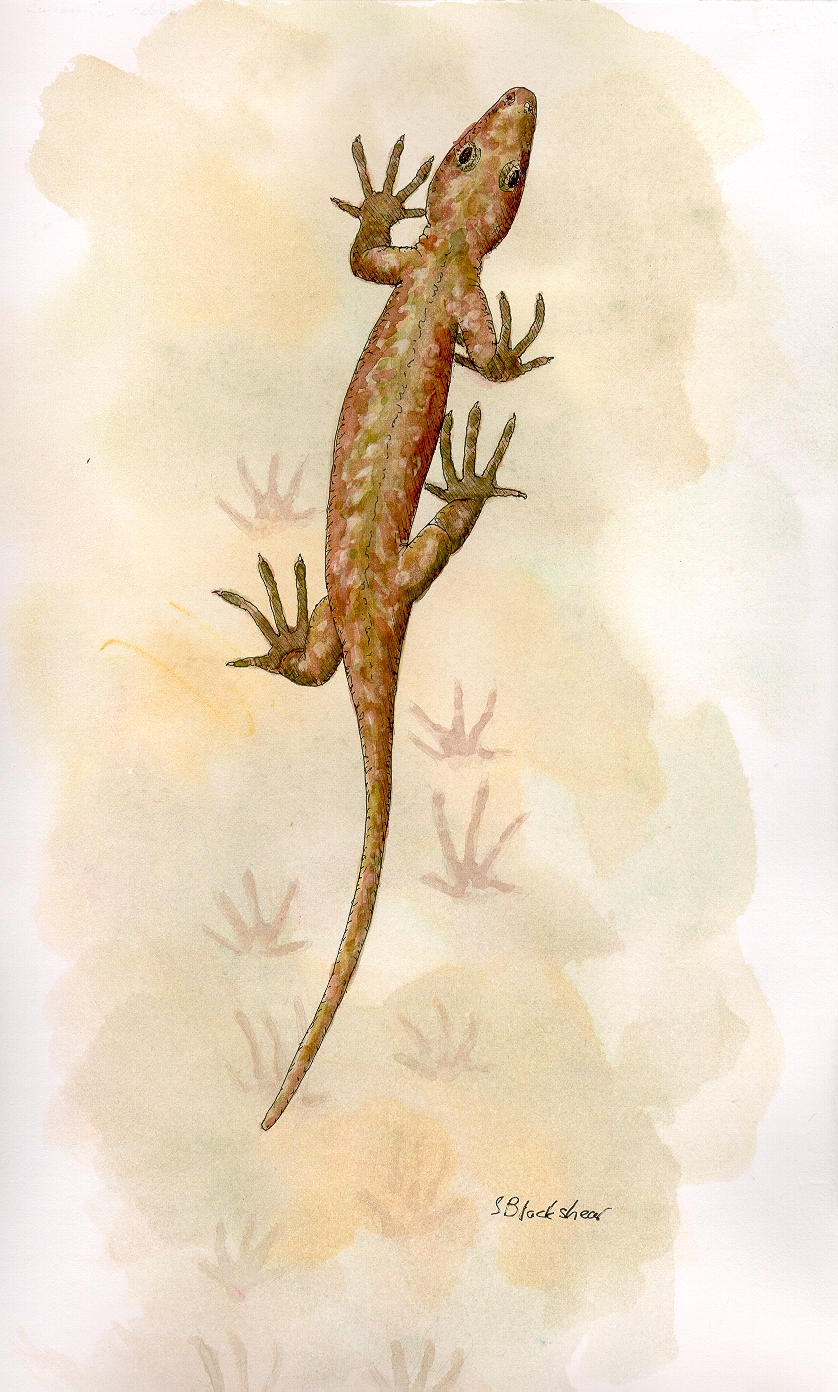



The purpose of this website is to allow people interested in fossil trackways and traces to examine and interpret the trace fossils that have been found at the Minkin Paleozoic Footprint Site, the only state-protected fossil site in Alabama and the first former surface coal mine ever exempted from reclamation for the purpose of scientific study. The site (originally known as the Union Chapel Mine) was discovered in 1999 to be rich in the fossil trackways of tetrapods (four-limbed animals) that lived during the Carboniferous period, the broad geological period of Earth history (299-318 million years ago, or Mya) when the world's forests grew explosively. Dead plants from these forests (which were tropical swamps at the time) collected into peat that was later buried in tons of sediment and heated, leading to the vast coal reserves found today in Alabama and neighboring states. The fossil trackways from the Minkin site were sandwiched in rock layers between two thin seams of coal that were being mined by a local company. When the mining operation broke up the rocks to get the coal, the tracks were revealed in the "spoil piles."
The sedimentary rocks exposed by the mining operation at the Minkin site are part of the Mary Lee coal zone and were laid down during the narrow geological time window called the Westphalian A, 310-315 Mya, part of the early Caboniferous period, within what geologists call the Paleozoic era, or "era of ancient life." At the time, the Minkin site was part of a tidally-influenced, mostly freshwater estuary where a large river flowing from the ancestral Appalachian Mountains met the boundary of a huge inland sea (the Warrior Basin). When the tide went out, the water depth would be low enough for terrestrial animals to walk out on a nearby mudflat and leave traces of their activities. These traces would quickly be buried in sediment, leading to their preservation as fossils.
The Minkin site trace fossils are extremely interesting for several reasons. First, they provide a glimpse of everyday life during the Carboniferous period, and tell us about the existence of animals for which no fossil bones have ever been found. The conditions needed to preserve tracks as fossils are not the same as those needed to preserve bones. Soil near coal age forests would have been very acidic from decaying plants, and would have dissolved the bones and shells of dead animals on the mudflat. Secondly, professional paleontologists have determined that reptiles first appeared during the Westphalian A. Jennifer Clack, a professor of vertebrate paleontology at Cambridge University, states in her 2002 book, Gaining Ground: The Origin and Evolution of Tetrapods, that "It is during the Westphalian that the first remains of animals that can be confidently called reptiles are found." This gives the trace fossils found at the Minkin site an even more special significance: some of the tetrapods that left their tracks on the ancient mudflat were among the earliest reptiles that ever lived. Dinosaurs were more than 60 Myr in the future and owe their humble beginnings to animals like those that walked at the Minkin site more than 300 Mya. Finally, fossil trackways and traces are fascinating in their own right. They are totally about life while bones are about death. Bones can tell us what an animal looked like when it was alive, but trace fossils tells us what an animal was doing while it was alive.
This website is designed to allow people to classify and analyze Minkin site fossils from a large number of photographs that were taken from 2000-2009 for the purpose of documenting the site for scientific study. In the process, classifiers can learn how to recognize different kinds of trace fossils and contribute to the knowledge base about the animals that lived in Alabama so long ago.